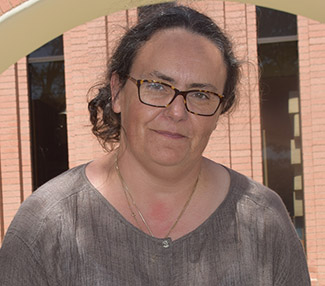
Beatrice Mousli Bennett
There are many Holocaust survivors who wrote after the war about their experiences, but Beatrice Mousli Bennett is focusing her attention on writers who are far less studied: those who continued to write even while they faced occupation, deportations and oppression in the throes of World War II.
Bennett is the USC Shoah Foundation Center for Advanced Genocide Research’s 2016 Faculty Summer Research Fellow. The fellowship provides support for a USC faculty member to conduct research in the Visual History Archive while in residence at the Center for one month.
Bennett is a literary historian, associate professor of French and director of the USC Francophone Research and Resource Center.
She has been interested in Holocaust literature and writing by survivors for over 20 years and became particularly interested in writers who wrote “under threat” during World War II, including Max Jacob. Jacob was a French writer and artist who was born Jewish but later converted to Catholicism. He was a contemporary of Pablo Picasso, Jean Cocteau, and Amedeo Modigliani and is considered an important link between symbolism and surrealism.
Jacob, who was also homosexual, was arrested and sent to Drancy, where he died in 1944 at age 47 before he could be deported to Auschwitz.
For her research as the Center’s faculty fellow, Bennett is researching Jacob and others like him who continued to write and create even as they faced persecution by the Nazis.
Research fellow Beatrice Bennett is studying Holocaust writing by survivors this summer.
“At first he said ‘I’m not going to write, I’m not going to paint,’ and then he came back to it,” Bennett said. “So that’s something I had in the back of my mind that I wanted to explore.”
In addition to producing her own writing about writers under threat, Bennett is also working with colleagues to organize an international conference on the subject. She hopes testimony from the Visual History Archive can be incorporated into the presentations.
She also plans to introduce the Visual History Archive to the students in her upcoming course in the French department, “Gateway to Research.”
While written texts about the Holocaust, such as memoirs and historical books, are fairly familiar to many people, video testimony can offer a completely different approach to studying and learning about the Holocaust, Bennett said.
“It’s kind of amazing to have actual video images of people who can talk about those subjects and about those people,” she said. “It’s a whole other dimension.”